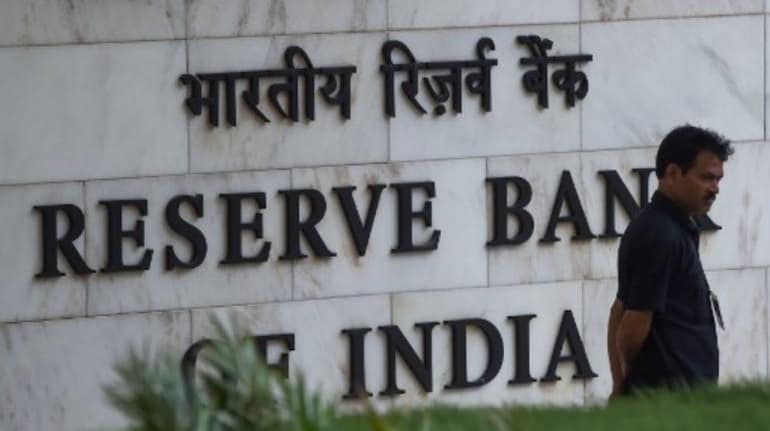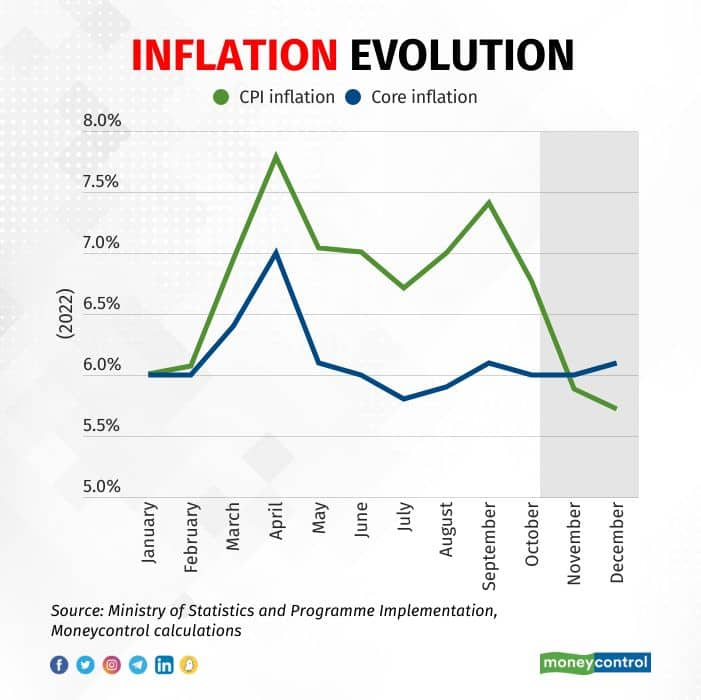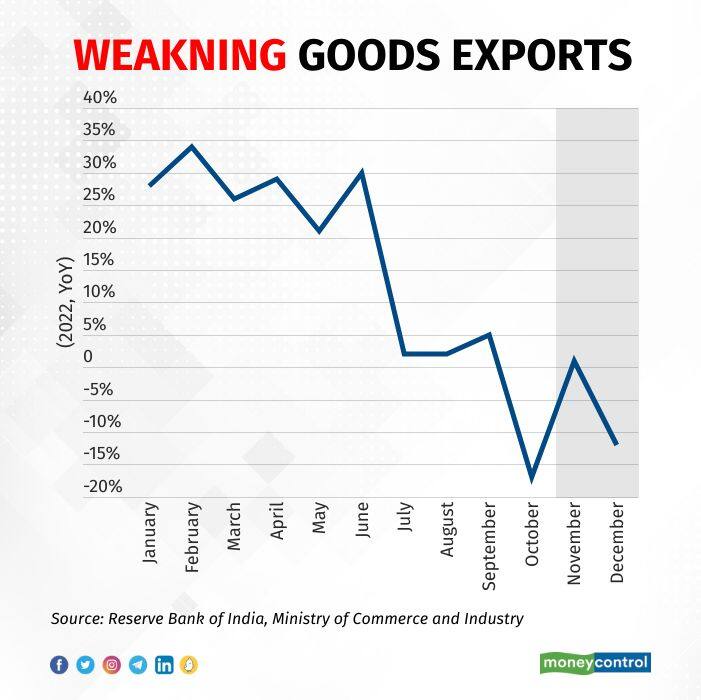



After the Union Budget, all eyes are set on the outcome of the Reserve Bank of India's Monetary Policy Committee meeting that started on February 6. Headed by Governor Shaktikanta Das, the committee's decision is scheduled to be announced at 10:00 am on February 8.
The MPC is widely expected to raise the policy repo rate for the sixth time in 10 months and add to its 225 basis points of rate hikes from 2022. However, the size of the rate hike is seen becoming smaller for the second consecutive meeting – after increasing the repo rate by 50 basis points in September and then 35 basis points on December 7, the MPC is expected to raise it by 25 basis points on February 8 to 6.5 percent in what may be its final rate hike of the current cycle.
One basis point is one-hundredth of a percentage point.
While voting on the interest rate decision, the committee's members will examine a range of data to assess the economy. Moneycontrol takes a closer look at the movement of key economic indicators since the MPC met on December 5-7.
This list of indicators is not exhaustive but they are crucial in representing the state of the Indian economy.
Inflation
If the MPC's last meeting in early December came just a month after it had to hold an unscheduled meeting to discuss its failure to meet the inflation mandate, the current meeting is being held in much happier circumstances.
Consumer Price Index (CPI) inflation has been under the upper bound of the RBI's 2-6 percent tolerance for two months in a row now and is expected to print in below 6 percent again for January, data for which will be released on February 13.

But the last time around MPC stressed the need to bring down core inflation, which remains rather sticky at around 6 percent. However, there could be good news on that front, too.
"Trends of both goods and service Core CPI are on a declining path. It can be concluded that Core CPI is losing its momentum," noted Soumya Kanti Ghosh, group chief economic adviser at State Bank of India.
"We believe Core CPI could gravitate towards 5.5 percent or lower in the interregnum, as headline CPI move towards 5 percent in 2023-24," Ghosh added.
Oil relief
Cooling global crude oil prices over the last few months have played their part in the easing of price pressure.
In October, the average price of India's crude oil basket was $91.7 per barrel, which fell to $78.1 per barrel in December before edging up to $80.88 in January, according to data from the government's Petroleum Planning & Analysis Cell.
As per the RBI's six-monthly Monetary Policy Report from September, if the price of India's crude oil basket falls by 10 percent relative to the assumption of $100 per barrel for the second half of 2022-23, inflation could ease by around 30 basis points.
On the whole, the average price of India's crude oil basket from October 2022-January 2023 has been $84.6 per barrel, which is 15 percent below what the RBI had assumed in its latest inflation forecasts.
Interest rate differential
The difference between Indian and US government bond yields had narrowed sharply to under 350 basis points in November. However, the number has edged up in the last couple of months to stand at around 370 basis points.
"Markets are still forcefully, or rather wishfully, pricing in at least 33 basis points cuts by the US Fed in late 2023 (versus 50 basis points pre-US labour report), despite a converging view on global growth closer to a soft landing," said Madhavi Arora, lead economist at Emkay Global Financial Services.
According to Arora, this "mild global repricing" has led to talk of whether the MPC can maintain the status quo.
"To be sure, global inflation cooling is not yet sufficiently large or broad-based enough to bring the rate-hiking cycle to a convincing conclusion. However, this has not prevented a dovish turn from a number of central banks in both DMs (developed markets) and EMs (emerging markets), amid growing concerns over the transmission of policy tightening to growth. Markets are expecting the same rub-off to happen in RBI's reaction function, especially as the split is getting wider within the MPC," Arora added.
Growth
If the US is adding a surprisingly large number of jobs, the situation in India is sombre.
The first advance estimate for the GDP of 2022-23 pegged India's growth rate for the year at 7 percent – 20 basis points higher than what the RBI had forecast. But it is next year's growth that has economists on the edge, even as the government's recently published Economic Survey forecast India's GDP growth at 6.5 percent in 2023-24.
In an interview to Moneycontrol following the release of the minutes of the December 5-7 meeting, MPC member Jayanth Varma had expressed his worries about growth in 2023-24, when the economy would encounter several headwinds simultaneously.
"It (growth in 2024-25) will look good provided we survive 2023-24 without doing too much damage to the economy. And the fear is that every incremental rate hike is doing damage to the economy," Varma had said.
Weakening exports
A key dampener for India has been the poor performance of its merchandise exports on account of falling external demand.

"While inflation and current account deficit concerns are elevated for now, the global slowdown is clearly hitting India's exports," noted Nuvama Research.
India's goods exports contracted by 12 percent year-on-year in October and inched up by less than 1 percent in November, before posting another 12 percent decline in December.
Discover the latest Business News, Sensex, and Nifty updates. Obtain Personal Finance insights, tax queries, and expert opinions on Moneycontrol or download the Moneycontrol App to stay updated!
Find the best of Al News in one place, specially curated for you every weekend.
Stay on top of the latest tech trends and biggest startup news.